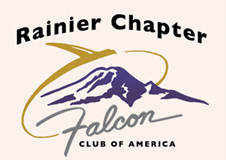Here is my updated configuration. The brake lines attach directly to the master cylinder and the only pipe thread is for the hydraulic brake light switch.
master cylinder.JPG
The owner of the Meineke car care center near my house used a hand-held hydraulic press to make the flare in my brake lines, and he did it for free! He's a good guy.
Tube Nuts and Flares.JPG
Here is my final parts list for the conversion:
From NAPA auto parts:
Part Number M2036 New 1967 Ford Mustang Master Cylinder, $63.49
Part Number SL134 Stoplight Switch, 1/8-NPT, 27 threads per inch, $8.99
Part Number 641-3296, Brake Fit Tube Nut, $0.69
Part Number 641-3322, Brake Fit Tube Nut, $0.69
From O’Reilly auto parts.
Part Number PA-308, 8” x 3/16” brake line with a fitting on each end (2 X $4.99), $8.98
Part Number 130333, 3/16” Union Tee (3/16" fitting has 3/8" - 24 threads), $5.99
From e-bay:
Part Number: ALL50137, AllStar Performance 3/16" Inverted Female Brass Tee Brass with a 1/8” NPT gauge port, $8.49 + free postage
Grand Total: $88.83.
Trivia: I used a bathroom scale and found that the 1967 Mustang master cylinder weighs 5.2 lbs.
The clerk told me that it was actually less expensive for me to buy a new rather than a reconditioned master cylinder because I did not have an old master cylinder to turn it for the core fee. NAPA Master Cylinder for 1967 Mustang with manual brakes: http://www.napaonline.com/Catalog/CatalogItemDetail.aspx/Brake-Master-Cylinder-New/_/R-NMAM2036_0358750724
“Beginning in 1967, Ford went to the federally mandated dual braking system, which provides braking pressure should the front or rear system fail. This is a dual reservoir master cylinder, with separate reservoirs feeding master cylinder bores positioned in tandem. Stepping on the brake pedal pressurizes separate front and rear brake systems.”
See: http://www.mustangmonthly.com/techar.../photo_03.html







 Reply With Quote
Reply With Quote











Bookmarks